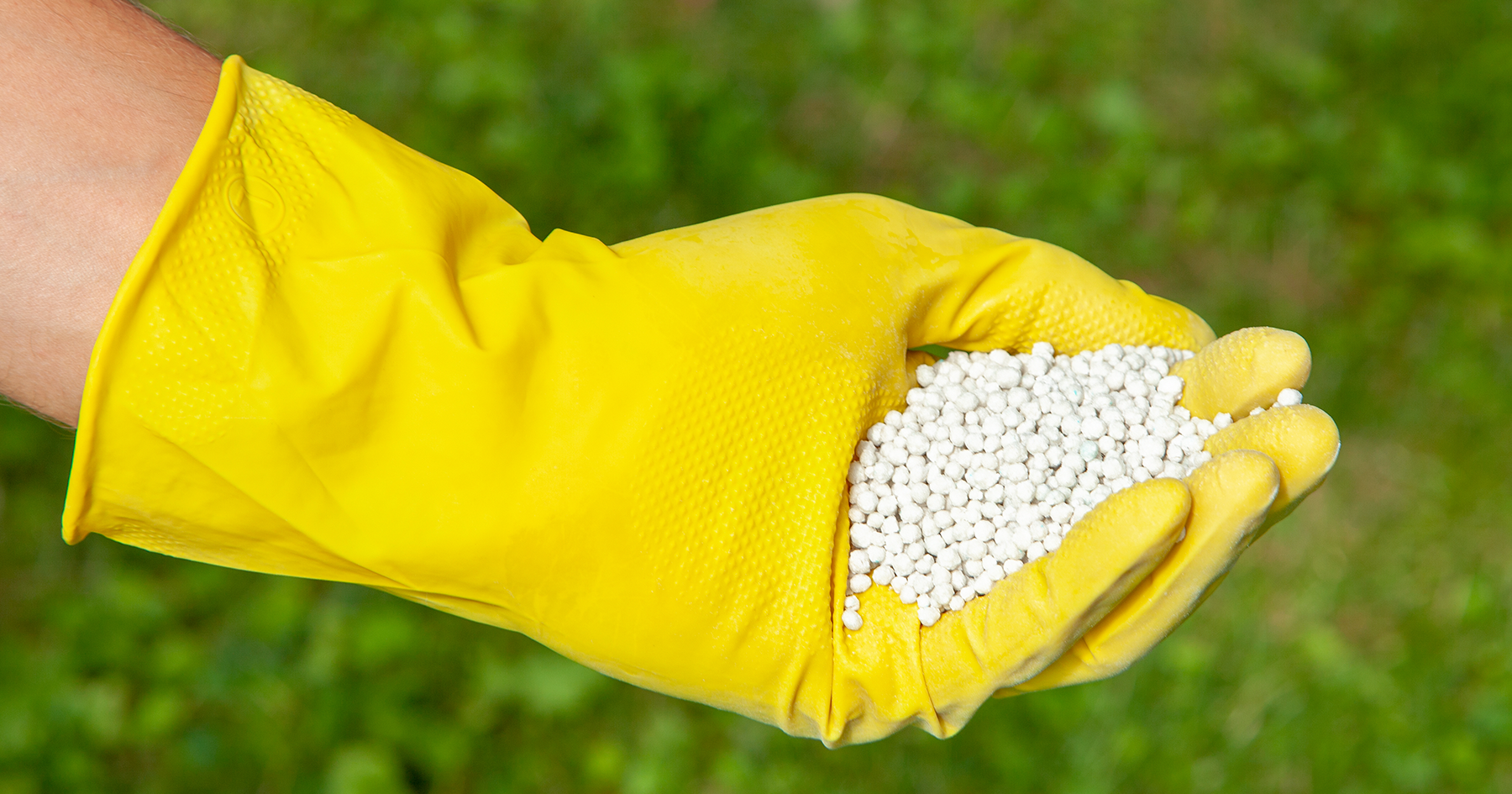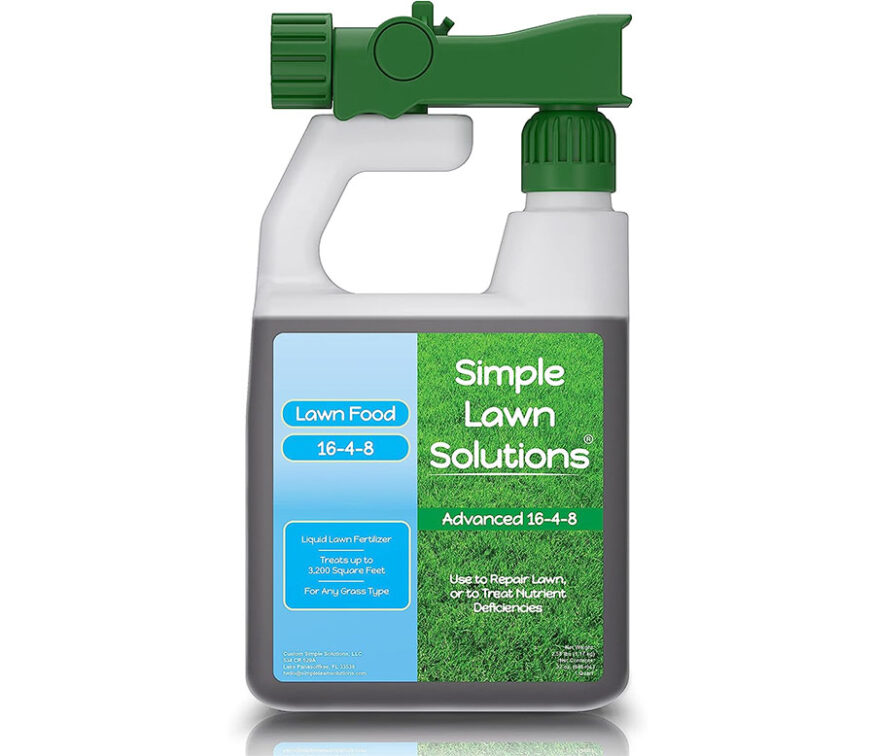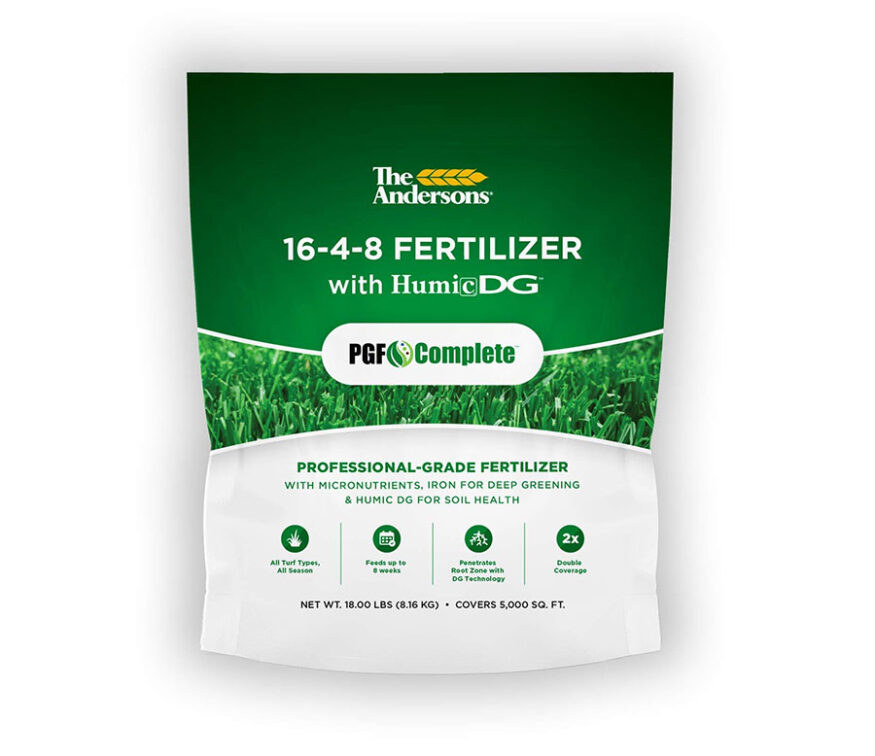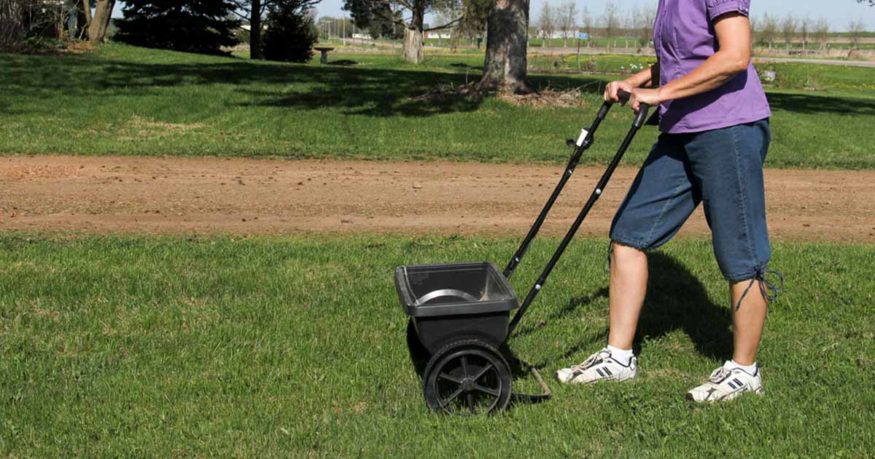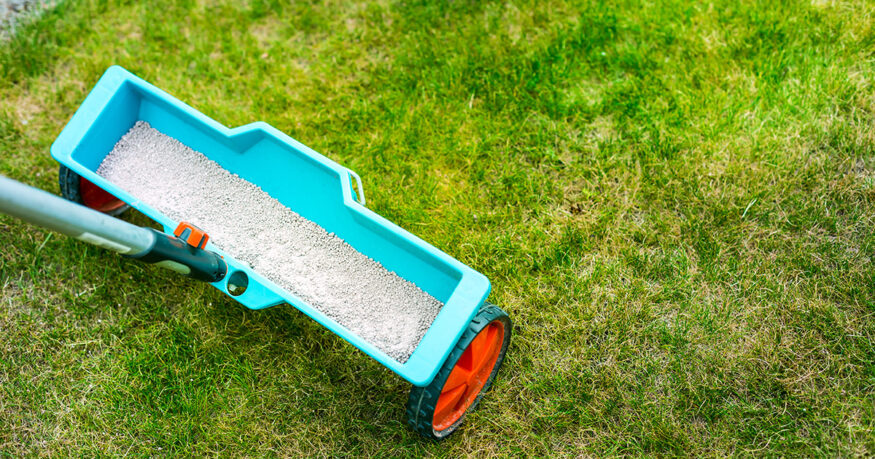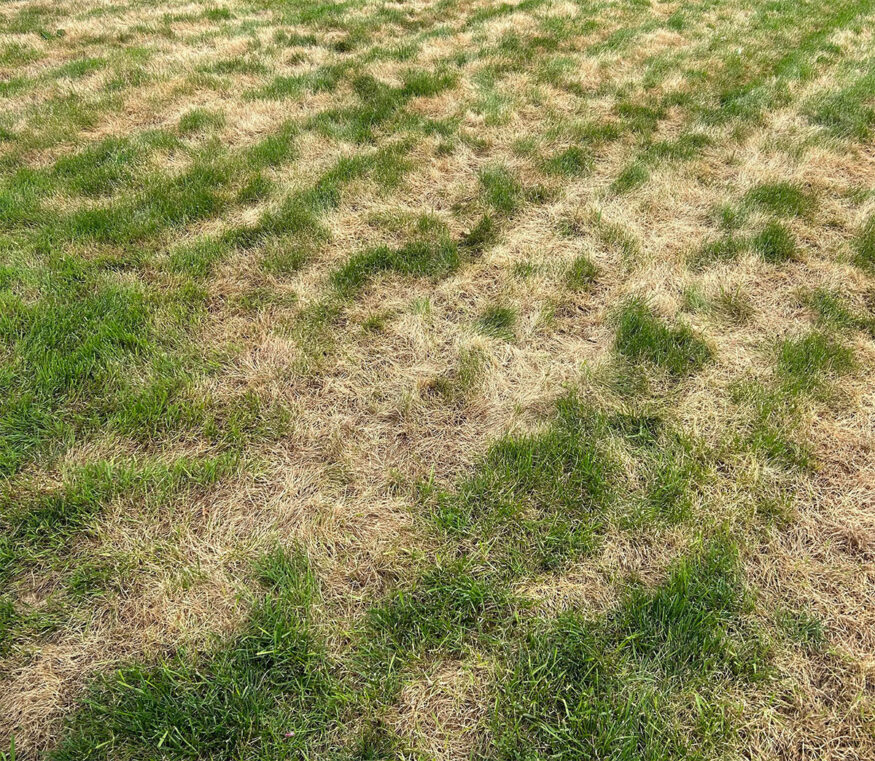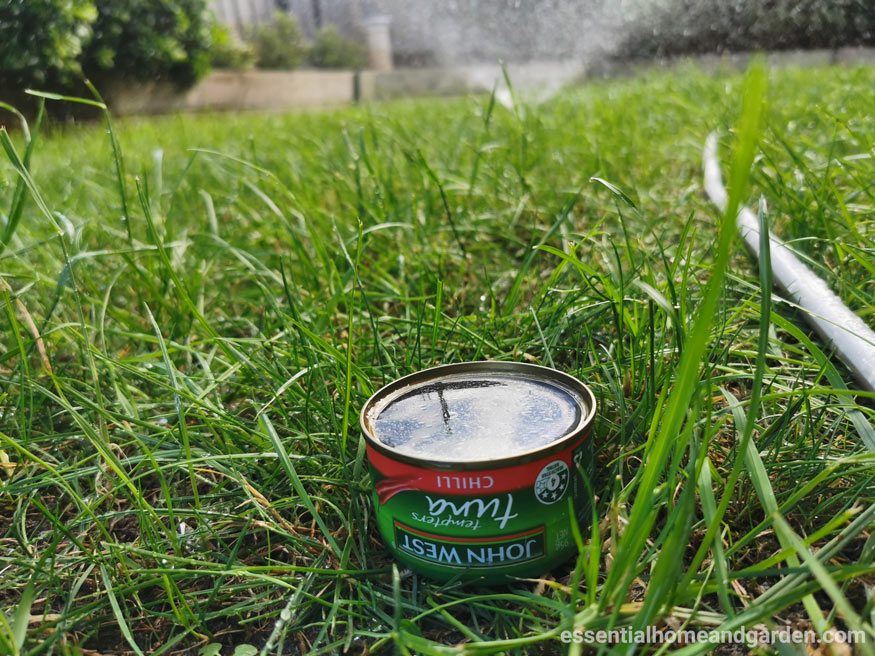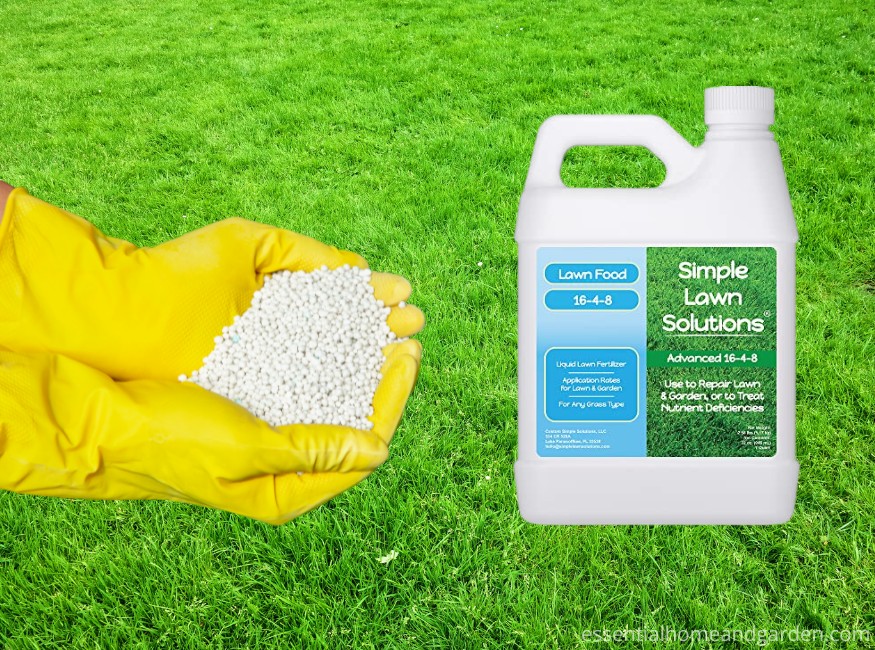Unleashing the full potential of your Zoysia grass starts with understanding what makes it tick. Zoysia, adored for its lush carpet-like appearance, thrives when given the right nutrients.
High on its wish list is a good dose of nitrogen – the secret ingredient to that deep green, envy-inducing lawn. But, there’s a catch – too much phosphorus could turn your lawn-care dreams into a thatch nightmare.
So, what’s the best fertilizer for Zoysia grass? Look for those with a high nitrogen and low phosphorus formula such as 15-0-15, 15-0-10, or 16-4-8. Not only will this feed your Zoysia’s nitrogen craving, but it also safeguards it against stress and disease with a healthy dash of potassium.
Now, let’s dive into the nitty-gritty of fertilizing Zoysia grass.
[ez-toc]
The Best Fertilizer For Zoysia Grass – Commercial Options
| Image | Product | Features | Price |
|---|---|---|---|
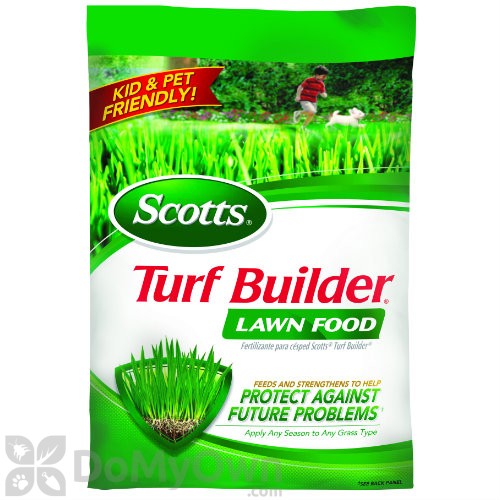 | Type: Synthetic | Check Price NowAvailable on Amazon | |
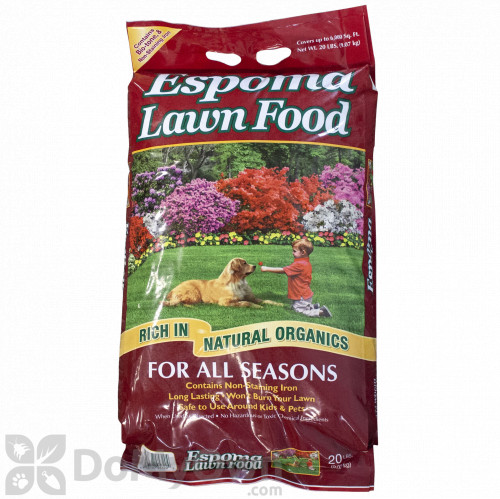 | Type: Organic | Check Price NowAvailable on Amazon | |
 | Type: Synthetic | Check Price Now | |
 | Type: Synthetic | Check Price Now |
Scotts Turf Builder
Scotts Turf Builder is more than just a fertilizer, it’s a complete lawn food that provides essential nutrients to help your Zoysia Grass grow thicker, greener, and stronger. It does this by improving the grass’s ability to absorb water and nutrients from the soil. Think of it as a health boost for your lawn, enhancing its natural characteristics and resilience.
One of the great things about Scotts Turf Builder is how it supports your Zoysia Grass throughout the year. You can apply it in the spring, summer, and fall, following the instructions on the label. The recommended rate is 1.5 lbs of product per 1,000 sq. ft. of lawn area. But remember, timing is key – always apply when the grass is dry and before watering or rainfall.
The benefits of using Scotts Turf Builder on your Zoysia Grass are many. It improves the color, density, and texture of your lawn, making it more appealing to the eye. It also helps your grass recover from stress caused by heat, drought, mowing, or traffic. And, importantly, it prevents nutrient deficiencies that can affect the quality and growth of your grass.
Of course, like any product, Scotts Turf Builder has its downsides. It may not be suitable for all soil types and pH levels, and if applied too liberally, it could cause fertilizer burn. Plus, it might not address specific weed or insect problems that may affect your lawn, and it may not be compatible with some herbicides or pesticides.
But overall, Scotts Turf Builder is a fantastic choice for Zoysia Grass. It supports root development, enhances soil health, and ultimately, helps you achieve that perfect, green lawn you’ve always dreamed of. Just remember to follow the instructions, and your Zoysia Grass will thank you for it.
Espoma Organic Lawn Food
This organic and natural fertilizer is packed with long-lasting nitrogen, essential for promoting deep green color and healthy growth in your lawn. You’ll be getting more than just a fertilizer, as Espoma Organic Lawn Food is also enhanced with Bio-tone beneficial microbes. These tiny helpers improve soil quality and nutrient availability, giving your Zoysia Grass the best environment to thrive.
Here’s something that pet owners and eco-enthusiasts will appreciate: Espoma Organic Lawn Food is safe. It doesn’t contain any sludges, fillers, or synthetic chemicals which can harm the environment or cause lawn burn. So, you can confidently use it, knowing it’s safe around your furry friends and for the planet.
Application is a breeze, too. You can easily apply it with a drop or broadcast spreader, and the best part? It requires less frequent mowing than conventional lawn foods. Plus, it’s fortified with non-staining iron and water-soluble potash, helping your Zoysia Grass cope with heat, drought, and disease stress.
But before you start, keep in mind a couple of potential downsides. Espoma Organic Lawn Food may not provide quick results or correct severe nutrient deficiencies as effectively as synthetic fertilizers. It may also be a bit pricier than other options and not readily available in some local stores or online retailers.
Applying Espoma Organic Lawn Food four times per year—Early Spring, Late Spring, Late Summer, and Fall—can yield the best results. But remember, if you’re returning grass clippings, you’ll need 6 lbs. of Espoma Organic Lawn Food per 1,000 sq. ft. Double the rate for Late Spring and Fall applications if you’re removing the clippings. And don’t forget to water lightly after application, especially if rain isn’t in the forecast within 24 hours.
Simple Lawn Solutions Advanced
This liquid fertilizer has a balanced ratio of 16-4-8 NPK. NPK stands for nitrogen, phosphorus, and potassium, the three main macronutrients that plants need to grow and thrive.
One key perk of Simple Lawn Solutions Advanced is its easy application. You can simply use a hose-end sprayer or a backpack sprayer, no mixing or measuring needed. It’s packed with organic nutrients and micronutrients from seaweed and fish, enhancing root development, soil health, and stress tolerance. Plus, it’s safe for pets and children once it dries.
The beauty of this fertilizer is that it helps Zoysia grass stay green longer than other warm-season grasses. This is particularly beneficial in areas where cold temperatures can trigger early dormancy. However, be aware that it’s a tad more expensive than granular fertilizers per square foot of coverage.
Now, remember that a soil test is recommended before applying any fertilizer. This helps to ascertain the specific needs of the soil and the grass. Also, avoid over-fertilization, which can lead to issues like thatch buildup, disease susceptibility, and environmental pollution.
When applying the fertilizer, water your grass well after application to help the fertilizer penetrate the soil. Avoid fertilizing when the temperature is above 85 degrees Fahrenheit or when your grass is stressed.
Lastly, keep your mower handy. Regular mowing at the correct height (1-2 inches for Zoysia grass) helps improve air circulation and prevent scalping which can expose the roots to sunburn and compromise the effectiveness of the fertilizer.
The Andersons PGF Complete
This professional-grade fertilizer brims with a balanced ratio of nitrogen, phosphorus, and potassium, a combination that spells out optimal lawn health and growth. The 16-4-8 NPK ratio is especially suitable for Zoysia Grass, with nitrogen driving green-up and growth, phosphorus bolstering root development and stress tolerance, and potassium ensuring drought resistance and disease prevention.
One of the standout features of The Andersons PGF Complete is its inclusion of iron and other micronutrients. These elements not only prevent the yellowing and chlorosis of your lawn but also enrich the metabolic processes and nutrient uptake of your Zoysia Grass. The added Humic DG, a granular humic acid form, serves to enrich the soil and improve its structure, drainage, and water retention. This means not only will your Zoysia Grass absorb nutrients better, but the soil’s microbial activity will also be stimulated.
What makes The Andersons PGF Complete a preferred choice for many homeowners is its super-fine particles. These facilitate even distribution, providing twice the number of particles per square foot compared to other fertilizers in the market. The blend of quick and slow-release nitrogen allows for immediate feeding and extended nourishment for up to eight weeks. The quick results are another perk, with green-up visible in as little as a week with proper irrigation or rainfall. This fertilizer is suitable for all seasons and compatible with all grass types, making it versatile for various lawn needs.
However, it’s important to note that The Andersons PGF Complete may require more frequent applications than other fertilizers, depending on the soil condition and grass type. Also, it’s unavailable for sale in California due to state regulations. Application in hot weather conditions or heavy application may also cause damage to the grass.
When applying this fertilizer, make sure to apply it to dry foliage and water it in after application. Refrain from collecting clippings for at least one mowing following application to avoid particle pick-up. For summer applications on cool-season grasses, reduce the normal rate to 50-75%.
Best Natural Fertilizer For Zoysia Grass Lawn
Let’s dive into the world of organic fertilizers and understand how they can spruce up your zoysia grass. We will be exploring three champions in the organic fertilizer arena – compost, manure, and seaweed.
Compost: The Natural Nutrient Booster
Compost is one of the best organic fertilizers for Zoysia grass. It’s packed with essential nutrients like nitrogen, phosphorus, and potassium, which are the key building blocks for a healthy, lush lawn. But the benefits of compost don’t stop there. It can also enhance your soil’s structure and moisture retention, making it more resilient and fertile.
You don’t have to dig deep into your pocket to reap these benefits. You can make your own compost from kitchen scraps, yard waste, and other organic materials. Alternatively, you can buy it from a local supplier. Applying compost is straightforward – spread it evenly over the surface of your lawn and gently rake it in.
Manure: A Powerful Soil Fertility Enhancer
Manure is another organic fertilizer that deserves a place in your lawn care arsenal. It’s incredibly rich in nitrogen, a nutrient that Zoysia grass loves. It also plays a pivotal role in improving soil fertility.
Just make sure the manure you use is well-aged or composted to avoid burning your grass or introducing pathogens. And remember, a little goes a long way. Spread it thinly over the surface of your lawn and water it well. For an even more potent fertilizer blend, you can mix manure with compost.
Seaweed: The Stress and Disease Buster
Our final contender is seaweed. This natural fertilizer is a powerhouse of potassium and other micronutrients. What makes seaweed truly stand out is its ability to help Zoysia grass resist stress and disease. It also stimulates soil microbial activity, enhancing soil quality.
Seaweed is available in various forms, including liquid extract, powder, or granules. You can either spray it directly onto the foliage of your grass or mix it with water before applying.
When to Fertilize a Zoysia Lawn
So, when’s the best time to feed this green beauty? During its active growing season, of course!1,2 This usually kicks off from late spring to mid-summer.
But hold on, the story doesn’t end there. The frequency and timing of fertilizing Zoysia grass can shift based on your region’s climate and soil type. As a rule of thumb, aim to fertilize your grass about three times a year: early spring, early summer, and mid to late summer. When the soil temperature hits 55°F, usually around mid-April, give it a nutritious boost with a nitrogen-rich fertilizer. For the next two feedings, go for a balanced fertilizer with a 3-1-2 or 4-1-2 ratio of nitrogen, phosphorus, and potassium (N-P-K). And remember, never fertilize your Zoysia grass in late fall or winter. It’s nap time for the grass, and disturbing it could make it prone to cold injury and diseases.
Nailing the Fertilization Schedule: A Guide for Different Regions
Navigating the fertilization schedule can be a bit tricky, especially since it varies for different regions. Here’s a handy table that tells you when to fertilize Zoysia grass based on the average last and first frost dates in your area.
Remember to tweak these dates according to your local weather conditions and soil test results!
| Region | Last Frost Date | First Frost Date | First Fertilization | Second Fertilization | Third Fertilization |
| South | Mid-March | Mid-November | Mid-April | Early June | Mid-August |
| Central | Late March | Early November | Late April | Mid-June | Late August |
| North | Mid-April | Mid-October | Early May | Late June | Early September |
Reading the Signs: What Over-Fertilized and Under-Fertilized Grass Looks Like
Ever wondered if you’ve under-fertilized or over-fertilized your Zoysia grass?
Under-fertilized grass may show signs of yellowing, thinning, or slow growth. On the flip side, over-fertilized grass might brown, burn, or wilt at the leaf tips and margins6. Worse, it could lead to excessive thatch buildup, root damage, and nutrient leaching6.
Avoid these scenarios by sticking to the recommended fertilization rates and intervals. They’re based on soil testing and label instructions, and they’ve got your back. Do not apply more than 4 pounds of nitrogen per 1000 square feet per year.
Choosing the Right Time of Day: Morning or Evening?
Alright, now you’ve got the fertilizer and the schedule down, but when’s the best time of day to get down and dirty with your Zoysia grass?
Early morning or evening. That’s when temperatures are cooler, and the sun is less intense. Avoid the peak heat of the day to reduce the risk of fertilizer burn. And steer clear of wet or windy weather that could mess with the effectiveness and uniformity of your fertilizer application.
Once you’ve fertilized, give your lawn a good watering to help dissolve the fertilizer and usher it into the soil.
How to Fertilize Zoysia Grass
When it comes to fertilizing Zoysia grass, it’s all about the balance of nutrients. The best fertilizers for Zoysia grass are those high in nitrogen and low in phosphorus, such as 15-0-15, 15-0-10, or 16-4-8. Learn more about what the NPK ratio means here.
Nitrogen encourages lush, green growth, while too much phosphorus can lead to thatch buildup and environmental pollution. Keep your eyes open for these numbers on the fertilizer bag, and you’re on the right track.
Understanding Your Lawn Fertilizer Needs
Now, how much of this fertilizer do you need? It depends on a few factors: the size of your lawn, the specific fertilizer you’ve chosen, and your soil conditions.
As a general rule of thumb, aim to apply 3 to 4 pounds of nitrogen per 1,000 square feet of lawn per year. It’s a good idea to use a soil test kit to get a clear picture of your lawn’s current nutrient levels and pH.
Related article: Understanding lawn soil amendments
Timing the Fertilizer Application Right
When should you apply the fertilizer? Your best bet is in late spring or early summer, when the soil temperature hits around 55°F and the grass is actively growing.
You can use a soil thermometer to check the soil temperature. It’s important to avoid fertilizing Zoysia grass in late fall or winter, as it can make it more susceptible to cold damage and disease.
Achieving an Even Fertilizer Application
To ensure an even and accurate application, consider using a spreader calibrated according to the instructions on the fertilizer label. You can choose between a drop spreader, which drops the fertilizer directly below the hopper, and a broadcast spreader, which disperses the fertilizer in a circular pattern.
A tip to avoid streaks or burns is to apply fertilizer in two passes at right angles to each other. You can apply half of the fertilizer in a north-south direction, and then apply the other half in an east-west direction, overlapping slightly between passes.
Watering After Fertilizing
Once you’ve applied the fertilizer, it’s time to water your lawn. Watering helps to wash off any fertilizer residue from the grass blades and helps the fertilizer dissolve into the soil.
Aim for enough moisture to reach a soil depth of about 6 inches, but avoid causing runoff or leaching.
Common Fertilizer Mistakes to Avoid
While fertilizing Zoysia grass may seem straightforward, there are a few common pitfalls to avoid. Over-fertilizing can lead to excessive growth, disease susceptibility, nutrient imbalance, and environmental pollution.
Applying too frequently or at the wrong time can also cause issues. Lastly, using the wrong type of fertilizer can have negative effects on your lawn’s health. Follow the guidelines discussed earlier to keep your lawn in top shape.
Understanding Soil pH and Temperature
Your soil’s pH and temperature can significantly impact your Zoysia grass. Zoysia grass thrives in slightly acidic soil (pH 6.0 to 6.5). If your soil pH is too low or high, you may need to take steps to correct it.
Soil temperature is also key. Zoysia grass grows best when the soil temperature is 55°F or higher. Understanding these factors can help you optimize your fertilizing strategy.
Storing and Disposing of Fertilizer
Lastly, it’s essential to store and dispose of your unused fertilizer properly. Keep it in its original bag, in a cool and dry place, and away from children and pets. If you have leftover fertilizer, consider giving it away to other gardening enthusiasts, or check with your local waste management services for safe disposal options.
What Lawn Fertilizer Does Zoysia Grass Need?
When it comes to maintaining a lush, green lawn, understanding the best type of fertilizer for your grass type is crucial. For those with Zoysia grass, a warm-season variety that thrives in hot and humid climates, the choice of fertilizer can make a difference in its health and color.
NPK Ratio
You might have noticed some numbers like 15-0-15, 15-0-10, or 16-4-8 on fertilizer bags. These are N-P-K ratios, which stands for Nitrogen, Phosphorus, and Potassium, respectively.
NPK, or Nitrogen (N), Phosphorus (P), and Potassium (K), represents the essential elements in fertilizers crucial for plant growth. Understanding the NPK ratio is vital for choosing the right fertilizer for your specific needs.
- Nitrogen (N): This first number in the NPK ratio promotes vibrant green foliage and lush growth. Nitrogen is essential for photosynthesis, which is the process plants use to convert sunlight into energy.
- Phosphorus (P): The second number plays a pivotal role in root development, flower and fruit production, and overall plant vitality. Phosphorus is crucial for energy transfer within the plant.
- Potassium (K): The third number in the ratio is responsible for strengthening the plant’s resistance to stress, disease, and harsh environmental conditions. It also aids in various metabolic processes.
Each of these elements plays a crucial role in maintaining a healthy lawn. But for zoysia grass, fertilizers with high nitrogen content and low phosphorus are the true game-changers.
Nitrogen: The Green Booster for Zoysia Grass
Why nitrogen, you ask? Well, it’s nitrogen that gives your zoysia grass that vibrant green color and lush appearance. It’s like the secret ingredient to a perfect lawn recipe.
Phosphorus: A Double-Edged Sword
On the flip side, phosphorus can be a bit tricky. While it’s essential for root growth, too much of it can cause excessive thatch buildup. This can result in a less-than-ideal lawn condition.
Besides, excess phosphorus may leach into water bodies, causing environmental pollution. So, it’s wise to choose a fertilizer with less or no phosphorus.
The Importance of Potassium
Let’s not forget about potassium. It’s like the unsung hero that helps your zoysia grass withstand stress and ward off diseases. A fertilizer with a healthy dose of potassium is like giving your lawn a strong immune booster.
Types of Fertilizer: Organic vs Synthetic
Let’s start with the basic types of fertilizers.
Organic fertilizers, derived from natural materials like compost, manure, or bone meal, are a great choice for their environmental friendliness. They offer a variety of nutrients, such as nitrogen, phosphorus, and potassium, and also improve the soil’s structure and moisture retention. However, their slow-release nature might not be ideal for fast-growing Zoysia grass, and they can sometimes bring unwanted weed seeds or pathogens.
On the other hand, synthetic fertilizers are chemically formulated to offer a concentrated dose of nutrients. They are water-soluble and quickly absorbed by plants, making them an effective solution for nutrient deficiencies. They also have a precise N-P-K ratio that can be tailored to your lawn’s needs. However, synthetic fertilizers can be expensive and harmful to the environment. They can also burn your grass or create fertilizer salt deposits in the soil if applied excessively or too often.
Digging into Organic Fertilizer
When it comes to feeding your Zoysia grass, an organic option can be a great choice. What makes it so appealing? For starters, it’s environmentally friendly. It’s made from natural materials like manure or compost, contributing to the reduction of waste and harmful chemicals. Plus, these natural materials work wonders in improving your soil structure and moisture retention.
But it’s not all sunshine and rainbows. Organic fertilizers are known for their slow-release nature. This means they gradually supply nutrients to your soil, which could be an issue if you have fast-growing Zoysia grass that needs a nutrient boost, pronto! Also, depending on the composition, organic fertilizers may contain weed seeds or pathogens – something you definitely don’t want in your lawn.
Synthetic Fertilizer: A Boost with a Cost
Next up, synthetic fertilizers. These man-made options are a quick-release solution, providing a precise Nitrogen-Phosphorus-Potassium (N-P-K) ratio tailored to your lawn’s needs. If your soil is lacking in a specific nutrient, synthetic fertilizers can be the quick fix you need.
However, they come with a hefty price tag and are not the best choice for the environment. Overuse can harm local ecosystems and may even burn your grass or create unwanted fertilizer salt deposits in your soil.
Granular vs Liquid Fertilizers
Moving onto the forms of fertilizers, there are granular and liquid options. Granular fertilizers are solid particles that are spread on the lawn surface using a spreader. They are easy to use and provide even coverage and long-lasting results. They can be either organic or synthetic, slow-release or quick-release. However, they require watering after application to dissolve into the soil and reach the roots. They can also be washed away by rain or irrigation if not applied properly.
Liquid fertilizers, on the other hand, are solutions that are sprayed on the lawn using a hose-end applicator or a backpack sprayer. They are fast-acting and provide immediate results. While they can be more expensive and require more frequent applications than granular fertilizers, they can be mixed with other products such as herbicides or insecticides for convenience. However, they can be unevenly distributed or evaporated if not applied correctly.
Granular Fertilizer: The Easy Option
Cue granular fertilizers. These little nuggets of nutrients are super easy to use. Simply spread them evenly across your lawn for long-lasting results. The great thing? They can either be organic or synthetic, slow-release or quick-release. So, you have plenty of options.
But remember, granular fertilizers require watering after application. Without it, they might not penetrate the soil effectively. Also, if it rains or you water your lawn too soon after application, you run the risk of washing away all those beneficial nutrients.
Liquid Fertilizer: The Fast-Acting Solution
Lastly, let’s talk about liquid fertilizers. If you’re looking for immediate results, these are your go-to. They’re fast-acting, providing nutrients directly to your plants’ roots, and can even be mixed with other products for a customized lawn care solution.
But like synthetic fertilizers, they can be pricey and need to be reapplied frequently. Plus, distributing liquid fertilizer evenly can be a challenge, and if it’s too hot out, some of it might evaporate before your grass can absorb it.
